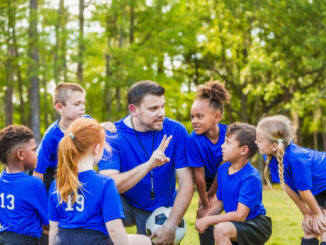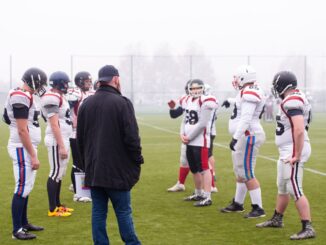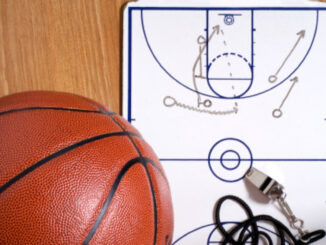
Some people see disaster and immediately “run to the fire.”
Others see disaster and run the other way.
Then there’s me.
I tend to analyze, strategize, and take some time to inhale the wonderful scent of burning furniture. Besides, if I only get one shot at running into a fire, I want to make sure I have a plan to make it back out. And, I admit that while I am planning, I am ever-hopeful that a real hero will come along and take my place.
You see, heroes don’t abundantly populate my heritage.
So now that you know I am more or less a retardant and not a sudden extinguisher when it comes to fires, let me tell you of an incident that pierced every molecule of my being in search of a hero.
It started when I agreed to take a year away from coaching travel basketball to coach a fourth and fifth-grade girls’ team in the local recreation program. I enjoyed the break from competitive basketball, and I was given a group that was fun and rewarding even though they lacked experience or skill.
Despite that weak, inexperienced roster and some difficult setbacks along the way, that team played the most phenomenal game in my coaching career. I wrote about that team here on OSN and here on my website.
Our team played well, grew each week, and of course, played that stellar game I just mentioned.
But there was another story from that team that I haven’t told, and it’s one that I think other youth coaches might value.
Anytime I did recreational basketball, I was determined to make it fun as well as developmental, and to do that; I promised the girls ice cream during the last half hour of our last practice each week at an ice cream shop across the street.
I don’t suppose I need to tell you that the ice cream motivator works wonders on ten-year-old girls.
It was at the end of one of our practices when I led the girls to that ice cream shop and bought each of them an ice cream cone.
Nicole was one of our most unifying players because she was high-energy and full of off-beat antics. At the same time, she was serious about doing well in the sport of basketball, so she practiced hard.
On the day of our visit to the ice cream shop, we left the store and began walking across the shopping center parking lot toward our practice court, where their parents would pick them up.
Nicole was walking backward and joking with others. I was a little in front of her, but with her back to me, I couldn’t see her face and didn’t know why the other girls were laughing so hard.
Soon, Nicole turned toward me, and her face was twisted in such a way that she looked like a circus character—no wonder the others were laughing.
But then, she began waving her hand in front of her face. Although that brought more laughter from others, I noticed that her eyes were starting to water, and the color of her face was changing.
I was stunned. The kid was choking!
I panicked. I felt pressure — like someone had just turned a vacuum cleaner on in my chest. I was NOT cool and calm under pressure. I was not a hero looking for a way to run into a fire. I was not someone with a sudden plan.
I was frightened. If I didn’t do something and do it fast, that ten-year-old girl might actually die right in front of me!
Crazy thoughts rampaged through me. How could I ever live if a child died in my care? What would I tell her dad? Okay, that last thought shouldn’t have been there, but that’s what happens to some of us non-heroes when suddenly faced with death.
I was beside myself with dread. What was I going to do?
Without further thought, I found myself lunging at the girl. I grabbed Nicole by her shoulders and spun her around so her back was to me. I stacked my hands into a fist-upon-fist configuration and brought them just below her ribs. I said a prayer and jerked my fists suddenly toward me. I did it with such force that I was concerned it may have been enough to break her ribs somehow.
Instead, her stomach caved like a balloon, her head jerked back as if to look at the sky, and her mouth erupted with chunks of that ice cream cone. I became aware that I had been holding my breath. When the ice cream cone escaped her airway, I exhaled in a gust.
I spun her around and put my face in front of hers. Had I gotten it all out? Could she breathe?
The brightness of her eyes was shown through her abundant tears. She began gasping for air. So did I. Her face began to return to its normal color, and a smile began to form.
Her father picked her up and whisked her away before I could talk to him. That was a relief because, I mean, what was I going to say? “Oh yeah, I almost killed your precious daughter with an ice cream cone”?
It amazes me that, to this day, nothing was ever said by anyone about that incident. It shook me for days, yet no one else even mentioned it.
After coaching youth basketball for many years and learning how to teach hundreds of drills and skills, and strategies, I will tell you that there was never anything more valuable to me than learning the Heimlich Maneuver that I have applied just that one time in my life.
If you have never learned it, please know that it is easy to learn, and you won’t ever forget how it works. Like me, you have no idea what tomorrow will bring or if it will put you face-to-face with a choking child. It’s so easy to be prepared, and you will be so glad that you were.
I had no idea I would face such a situation, and I am so grateful for the person who taught me Heimlich, even though I can’t remember anything about them.
I was never acknowledged for helping Nicole, but I’ve never cared about that because, of course, the reward was that an endangered child was okay.
There is another reward that I gained from that incident.
I learned something about myself. I had never imagined myself to be someone who would “run to the fire,” but I discovered that when I was the only one who could do something, and it involved saving a 10-year-old, I sprang into action with a suddenness that still surprised me.
I say that to you because you may have thought your default mode in the face of danger is reluctance, but it isn’t. When danger arises, and a child’s life is involved, you will rush to that child and do whatever it takes to save them.
I have a couple of random thoughts to add here in conclusion:
1) Don’t assume that ice cream motivates only 10-year-olds. While doing one of our Spring basketball clinics, I mentioned the ice cream motivator to one of our high school assistant instructors. The high school girl shuffled her feet and said, “Well, ice cream works on high school girls, too.” That came from a 17-year-old who was 6’2″, a high school All-American and held a dozen scholarship offers from prestigious colleges.
2) If you decide to do an ice cream motivator, tell parents you will only do it on the last practice day of each week. When they say “yes” (which they will because no parent wants their kid left out), you’ve gained their approval for the entire season with just one request. Also, tell parents it will be one scoop of ice cream only because you don’t want to interfere with their dinner. Actually, you just don’t want to put out more money, but they don’t need to know that.
3) Although learning the Heimlich Maneuver is the focus of this piece, there is another advisory I hope isn’t necessary. Still, I will add just in case: Never take a child across state lines, even if you have parental approval.
If you didn’t already know that, please turn in your whistle.




